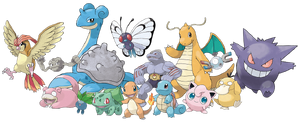
Pokémon (
: ポケモン,
: Pokemon), shortened from Pocket Monster (
: ポケットモンスター,
: Poketto Monsutaa), are a group of fantastical monsters who are the central focus and main feature of the Pokémon franchise. Pokémon are found all over the Pokémon World, and their habitat varies depending on the species, much like creatures in the real world. There are currently 1,025 documented species of Pokémon based on the nine generations of games so far (with more yet to be discovered as always). On the franchise's debut with Pocket Monsters Red and Pocket Monsters Green (or Pokémon Red Version and Pokémon Blue Version), however, there were only 151. One particular Pokémon, Pikachu, is the series' mascot.
Description
Pokémon take from a wide variety of inspirations including animals, plants, mythological creatures, and objects. Rattata resembles a rat, while most others take more unusual forms, such as Exeggutor, which resembles a coconut tree with animal facial features and feet. Although most Pokémon look and act like animals, others share no resemblance to any of such creatures, plants, or fungi, and a few even have machine-like forms, such as Registeel. Some Pokémon even resemble humans, such as Mr. Mime and Jynx. The most powerful types of Pokémon are Legendary Pokémon and Mythical Pokémon such as Lugia or Jirachi, who are usually the subject of myths and urban legends within the Pokémon World.
Each Pokémon has an elemental type, which affects their attacks, abilities, and weaknesses. For example, Pikachu, being an Electric Pokémon, specializes in electrical attacks, which are effective against both and Water Pokémon, but in turn are weak against Grass Pokémon and ineffective against Ground Pokémon. Each Pokémon has unique stats and characteristics. For example, Darkrai is very fast and strong but has mediocre defensive ability.
Most Pokémon have their own evolutions, which are different Pokémon that they can evolve into once certain requirements have been met, making themselves grow into a more mature and powerful shape. For example, a Ralts can evolve into Kirlia, and Kirlia can evolve into Gardevoir at level 30, or give a Dawn Stone to a male Kirlia to evolve it to Gallade. One certain Pokémon, Eevee, can evolve into as many as eight different ways.
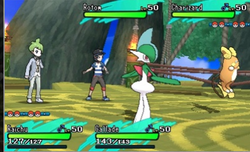
The relationship between a Pokémon and a human varies, depending on the species and personality. In the Pokémon World, several humans become Pokémon Trainers, who capture Pokémon using a Poké Ball to then keep them as a traditional pet and/or to have them engage in Pokémon battles. Several Pokémon Trainers go on a journey with the goal of capturing every known species of Pokémon, and they take a Pokédex with them to catalog each's Pokémon's data.
One unique way in which Pokémon are grouped is by generation. The Pokémon franchise started off with 151 Pokémon during the first generation. A generation usually begins when new Pokémon are introduced, such as when 100 Pokémon were introduced in the Generation II titles, Pokémon Gold Version and Pokémon Silver Version, raising the total number of Pokémon at the time to 251, and so on.
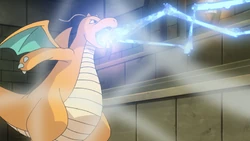
Unlike real-world animals, Pokémon naturally possess powerful magical abilities which they can use to perform a task (such as battling) or defend themselves or their Trainers from harm, and are often more anthropomorphic in nature, displaying high levels of intelligence. Although they usually can speak only one word - their own names, or in some cases simply grunt or roar (such as Charizard), they fully understand human language; Certain Pokémon do indeed speak in full sentences, as most often in the cases of Legendary and Mythical Pokémon (through telepathy and rarely actually talking). Due to this complex level of nature, Pokémon are often deemed dangerous by humans and rightfully so, especially if a Trainer attempts to enter tall grass without having trained Pokémon of their own for personal protection against wild ones, even for experts.
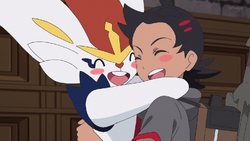
Despite their potentially deadly powers and are designed for combat, as revealed in the games and other media within the franchise, due to it is also part of its central theme, all Pokémon, including Legendaries and Mythicals, can be befriended, as the creatures themselves under normal circumstances are known to be pure-hearted, view humans as friends, and clearly wanted to have a close bond with their Trainers, which is more often displayed in the core series with first partner Pokémon. However, though most people in the Pokémon World use Pokémon the right way as loyal companions, there are others who use them wrongly. Such foul Trainers often steal or treat Pokémon, often Legendaries, as tools of war for global domination or money.
Life process
Normally, Pokémon will start their life from Pokémon Eggs through a breeding process, but some cannot be born through this method, such as Legendary Pokémon. After a Pokémon hatches from an egg, they become known as their “pre-evolved form”, with some cases also having them classified as Baby Pokémon. By having proper training from their Trainer, as with other role-playing games in general, the Pokémon will receive Experience points and level up. Upon reaching a certain level or happiness rating, or when given an Evolution Stone, or certain held items, most base-level Pokémon will metamorphose into an advanced new form, giving them a changed appearance and new abilities their previous form may not have possessed. This transition is called Evolution, despite having a much closer relation to metamorphosis than the biological concept of evolution by natural selection. In some cases, a single-type Pokémon can become a dual type from evolving, such as Charizard, a dual Fire/ type, unlike its pre-evolved forms, Charmander and Charmeleon, which are purely Fire-type. Some Pokémon lose a type from evolving, such as when Gloom, a Grass/Poison-type Pokémon, evolves into Bellossom, a pure Grass-type Pokémon.
Gender
Most Pokémon, like real-world animals, have one of two genders, determining whether the Pokémon is male or female. Some Pokémon have a greater chance of being one gender than another, such as Blastoise which has a 87.5% chance of being male, but only a 12.5% chance of being female. Some Pokémon can only be one gender, such as Froslass and Hitmontop, which are exclusively female and exclusively male respectively. There are also moves that will only work when Pokémon are certain genders, such as Attract which only works if the opponent is the opposite gender of the user.
In certain cases, some Pokémon are classified as genderless, such as most Legendary Pokémon and all Mythical Pokémon.
Appearances
Pokémon Conquest
In Pokémon Conquest, Warriors (the Trainers in the side-game) would link with Pokémon to catch them and would be restricted from linking with some due to types of the Pokémon itself or its evolved forms. They would also only be able to reach a specific link with the Pokémon. In a case where the link can reach 100%, that Pokémon is the Warrior's perfect link. Warriors and Pokémon would be in sync with each other during this time.
Categories
| Generation | World | |||
|---|---|---|---|---|
| Pokémon World | Other planets | |||
| 1. | Ancient Pokémon | Legendary Pokémon | Mythical Pokémon | |
| 2. | Current Pokémon | |||
| 3. | Artificial Pokémon | |||
Trivia
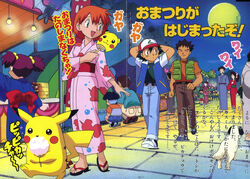
- As seen in some games and the anime, usually older media, although not shown explicitly, real-life animals actually co-exist with Pokémon. However, the two respective creatures are not related.
- For the latter, according the late Takeshi Shudō, the main writer of Pokémon the Series: The Beginning and the first three films, real animals went extinct in the Pokémon World years ago and therefore no longer exist. He claimed that instances of such cases appearing in earlier episodes of Pokémon the Series were due to the animation staff not paying enough attention.
- Interestingly, the third movie, Pokémon 3: The Movie, was originally going to about a real-world fossil being discovered before coming to life and go on a rampage through the Kanto region.
- Some sources debate whether Mew or Arceus is the ancestor of all Pokémon. For the former, it possesses the DNA of every Pokémon in existence and therefore can learn every single move. For the latter, it is said to be the creator of the world (in reference to ).
- In the Pokémon Mystery Dungeon series, interestingly, the player are Pokémon themselves.
- In "Island of the Giant Pokémon!", Jessie's Ekans and James's Koffing claimed to Meowth that there is no such thing as a "bad Pokémon", and any Pokémon that do dangerous actions are only because they are following their Trainers' orders whether good or bad, revealing they never personally mean harm toward humans or other Pokémon. However, although this is generally true, there are cases where they can be angry and/or destructive due to neglect or abuse by Trainers (mainly villainous teams) or, occasionally, Legendary/Mythical Pokémon's abilities going out of control.
- Some fans find this idea to be rather controversial, as certain Pokémon such as Mewtwo, Darkrai, Hoopa, or sometimes Dark-types (which are known as "Evil-type" in Japan) appear to revel in causing mischief or havoc, which is showcased in the films.